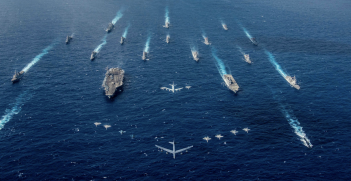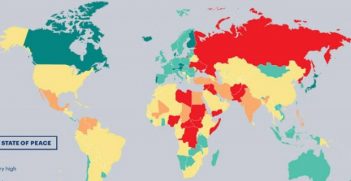Australia's Role in ASEAN’s Drug Tsunami

Sunday 26 June was the International Day against Drug Abuse and Illicit Trafficking, making it an apt time to reflect on what Australia ought to do to support ASEAN member states in reducing the supply of illicit drugs. Australia needs a whole-of-government strategy for addressing the cultivation, manufacture and trafficking of illicit drugs in and through ASEAN.
Australia has no whole-of-government strategy for addressing the cultivation, manufacture or trafficking of illicit drugs in the Association of South East Asian Nations (ASEAN) region. Nor does Australia have a clear national strategy for how it will engage with the region’s law enforcement agencies on tackling this shared problem. Worse still, at a time when law enforcement agencies across the region are looking to Australia for assistance, the Australian Federal Police’s (AFP) regional presence is rapidly shrinking in terms of people and resources.
As 26 June marked the International Day against Drug Abuse and Illicit Trafficking, it is an appropriate time to reflect on what Australia ought to do to support ASEAN member states in reducing the supply of illicit drugs, and in doing so, target the shared threat of transnational serious and organised crime.
From taxi drivers in Kuala Lumpur selling house brick-sized quantities of hash resin to Ho Chi Minh City Xe Om riders selling iPhone-sized deal bags of low-purity amphetamine type stimulants (ATS), drugs are everywhere in ASEAN. This is nothing new, the ASEAN region has long been awash with illicit drugs, especially ATS and heroin. But recent developments in the composition of the ASEAN illicit drug market coupled with increasing drug purity over the last two years have been game changers.
In 2015, the United Nations Office on Drugs and Crime (UNODC) reported drastic increases in the production and seizure of a range of illicit drugs across ASEAN. With a resurgence of heroin use in America, the increases in opium poppy cultivation and heroin production in Myanmar and Laos should be of little surprise. The industrial level production of low-purity ATS for ASEAN’s high-volume, low-profit margin markets has reached staggering heights with some 286 million tablets seized in 2015. But the real challenge for ASEAN police and leaders is the cheap, high-purity crystal methamphetamine or “ice” that is being distributed across the region.
Australia’s unquenchable appetite for ice, and its high-profit market has led to a surge in its production across Cambodia, Laos, Myanmar, Thailand and Vietnam. According to UNODC this increase has seen the region flooded with cheap ice. For ASEAN leaders this ice tsunami is a major health, justice and welfare problem in the making, especially in a region where harm and demand reduction strategies are almost non-existent. Over the last year I have seen firsthand how drug-related organised crime activities, including money laundering and corruption, are already having impacts on the rule of law and regional stability in the greater Mekong.
The transnational and amorphous nature of the criminal organisations and networks involved as well as their increasing sophistication is overwhelming the region’s law enforcement capabilities. In the wake of this challenge, police strategy across ASEAN has defaulted to arresting and prosecuting drug users. Unfortunately, the imprisonment of half a million drug users annually across Asia has little impact on drug production, supply or demand.
As recently highlighted by the UNODC’s Asia representative Jeremy Douglas, Australia is in a front seat position to support the region’s efforts to combat drug trafficking. Better still, many police leaders from across the region are asking for Australia’s assistance. And in the process, Australian authorities have the opportunity to further internationalise their supply reduction efforts.
But there are two small problems, a distinct absence of a cohesive strategy and a lack of resources. The most pressing issue is the number of Australian police operating overseas is rapidly reducing due to the continuous erosion of the AFP’s budget.
AFP posts in some countries such as Myanmar are already earmarked for closure while others in organised crime hotspots such as Thailand, Indonesia and Cambodia are reducing in size and budget. Substantial reductions in international operating budgets also impact on short-term operational deployments, which reduces the opportunities to provide subject matter expertise in complex transnational drug operations.Over the next four years it’s possible that the AFP’s international network could shrink a further quarter in size. The relationship damage that is caused by these budget cuts is significant. Rebuilding police-to-police relationships in the future will require rebuilding trust, which in many cases has already taken years to establish and has been lost due to Australia’s withdrawal of liaison officers.
These reductions do not make much sense given the recommendations of Australia’s National Ice Task Force’s 2015 report in which ice is presented as Australia’s number one crime threat. This report also argues that international cooperation and improved intelligence sharing offer the best opportunities to tackle the supply of ice in Australia. Strengthening international advocacy and engagement on cooperation and information sharing between law enforcement agencies will be increasingly difficult with a reduced international network in ASEAN.
More broadly, Australia needs a whole-of-government strategy for combatting the cultivation, manufacture and trafficking of illicit drugs in and through ASEAN. This strategy needs to draw together the existing international engagement efforts of Australia’s law enforcement community—including the AFP, Australian Crime Commission and Australian Border Force—into a collaborative regional counter-narcotic effort focussed on achieving supply reduction, as opposed to arrests and seizures. This strategy also needs to be appropriately funded so that agencies have the resources to provide operational and strategic assistance to their ASEAN partners. This funding isn’t just about sending liaison officers offshore, but creating a regional network for the sharing of information, intelligence and operational expertise.
While the continuation of bilateral agency level responses will have some operational outcomes, greater thought needs to be given to how the region’s law enforcement responses can be regionalised into transnational responses. INTERPOL offers a potential framework for improved cooperation, but its bureaucratic structure inhibits the kind of timely cooperation that will encourage operational granularity across the region. ASEANAPOL, while far from fully mature, offers Australia an appropriately robust framework for longer-term regional law enforcement drug intelligence exchange, operational coordination and the sharing of much needed expertise.
In the meantime, ASEAN law enforcement agencies are left waiting for Australia’s law enforcement agencies to provide the much needed support and leadership to counter narcotics operations.
Dr John Coyne is Head of the Australian Strategic Policy Institute’s Border Security program. John is regularly engaged by the United Nations as a consultant on transnational serious and organised crime in ASEAN. This article is published under a Creative Commons Licence and may be republished with attribution.





